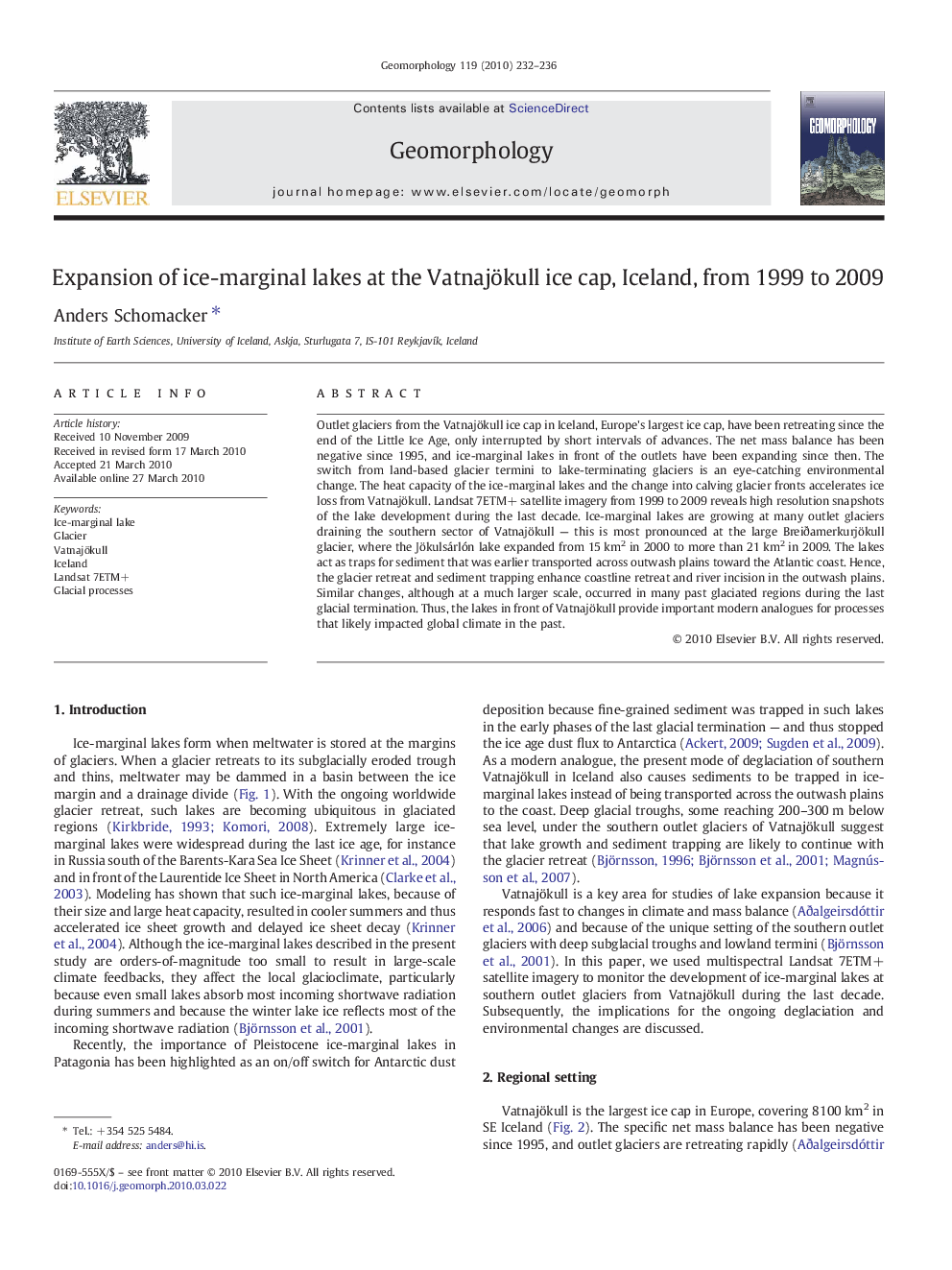| Article ID | Journal | Published Year | Pages | File Type |
|---|---|---|---|---|
| 4685990 | Geomorphology | 2010 | 5 Pages |
Outlet glaciers from the Vatnajökull ice cap in Iceland, Europe's largest ice cap, have been retreating since the end of the Little Ice Age, only interrupted by short intervals of advances. The net mass balance has been negative since 1995, and ice-marginal lakes in front of the outlets have been expanding since then. The switch from land-based glacier termini to lake-terminating glaciers is an eye-catching environmental change. The heat capacity of the ice-marginal lakes and the change into calving glacier fronts accelerates ice loss from Vatnajökull. Landsat 7ETM+ satellite imagery from 1999 to 2009 reveals high resolution snapshots of the lake development during the last decade. Ice-marginal lakes are growing at many outlet glaciers draining the southern sector of Vatnajökull — this is most pronounced at the large Breiðamerkurjökull glacier, where the Jökulsárlón lake expanded from 15 km2 in 2000 to more than 21 km2 in 2009. The lakes act as traps for sediment that was earlier transported across outwash plains toward the Atlantic coast. Hence, the glacier retreat and sediment trapping enhance coastline retreat and river incision in the outwash plains. Similar changes, although at a much larger scale, occurred in many past glaciated regions during the last glacial termination. Thus, the lakes in front of Vatnajökull provide important modern analogues for processes that likely impacted global climate in the past.
